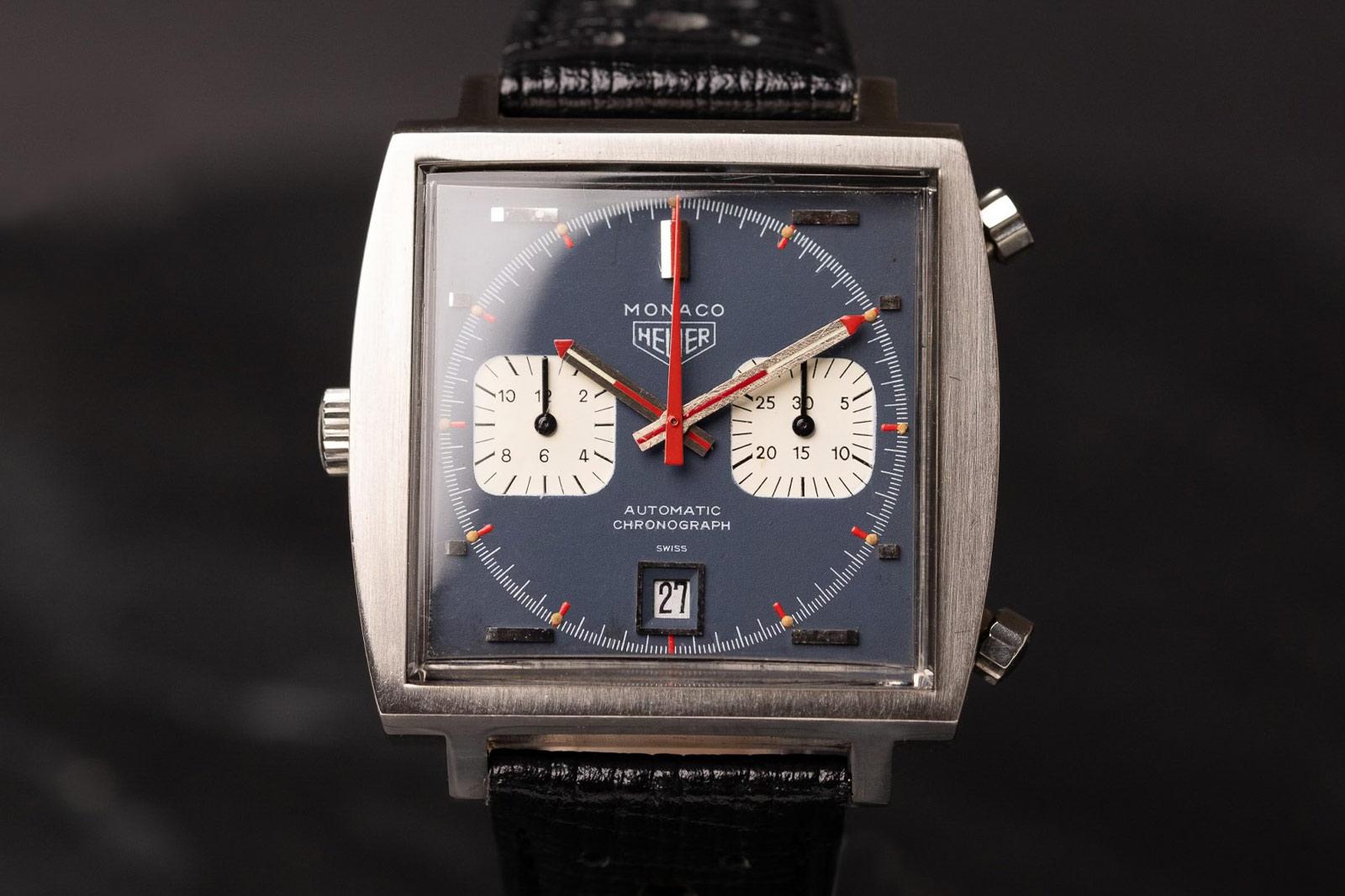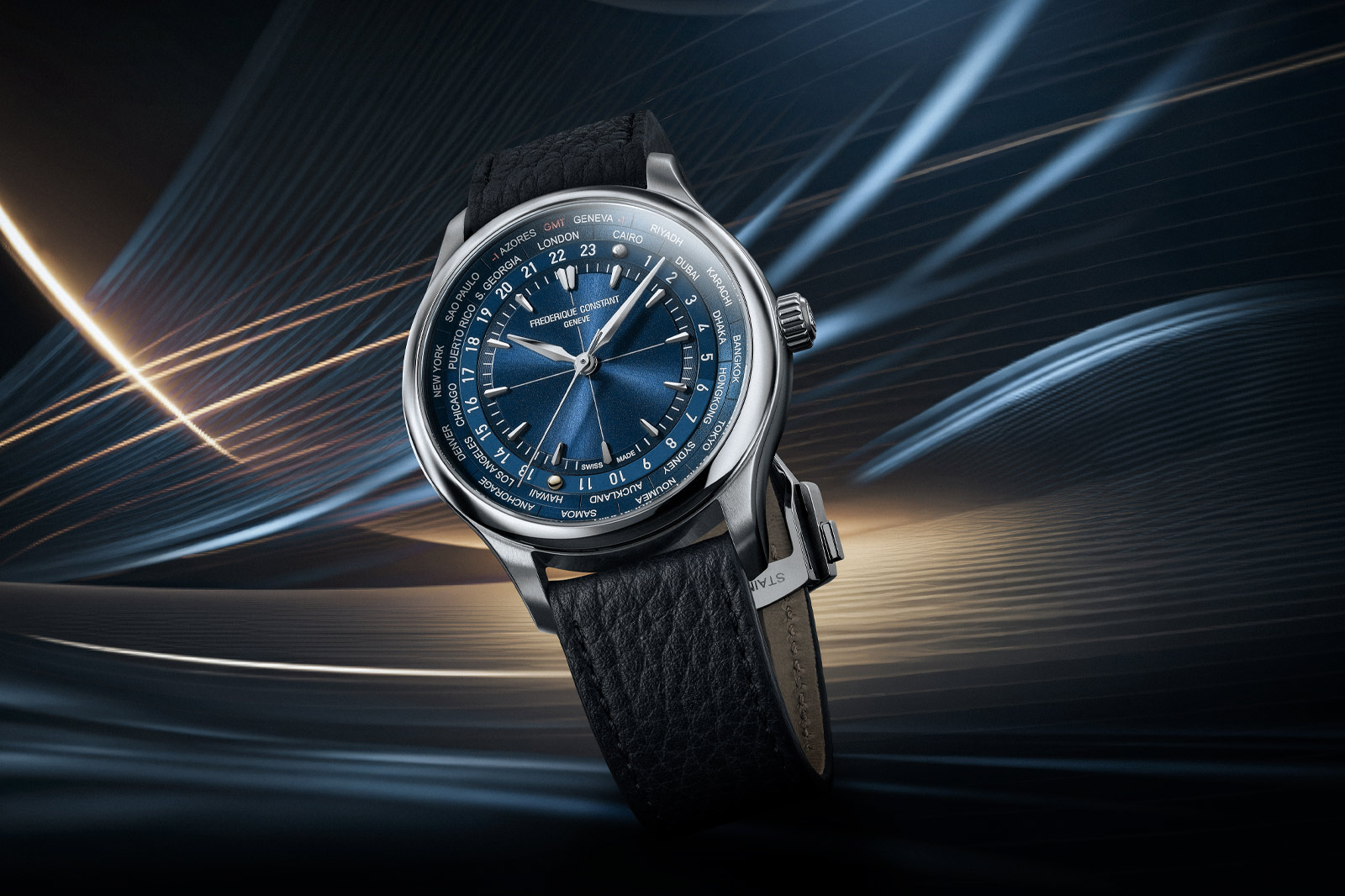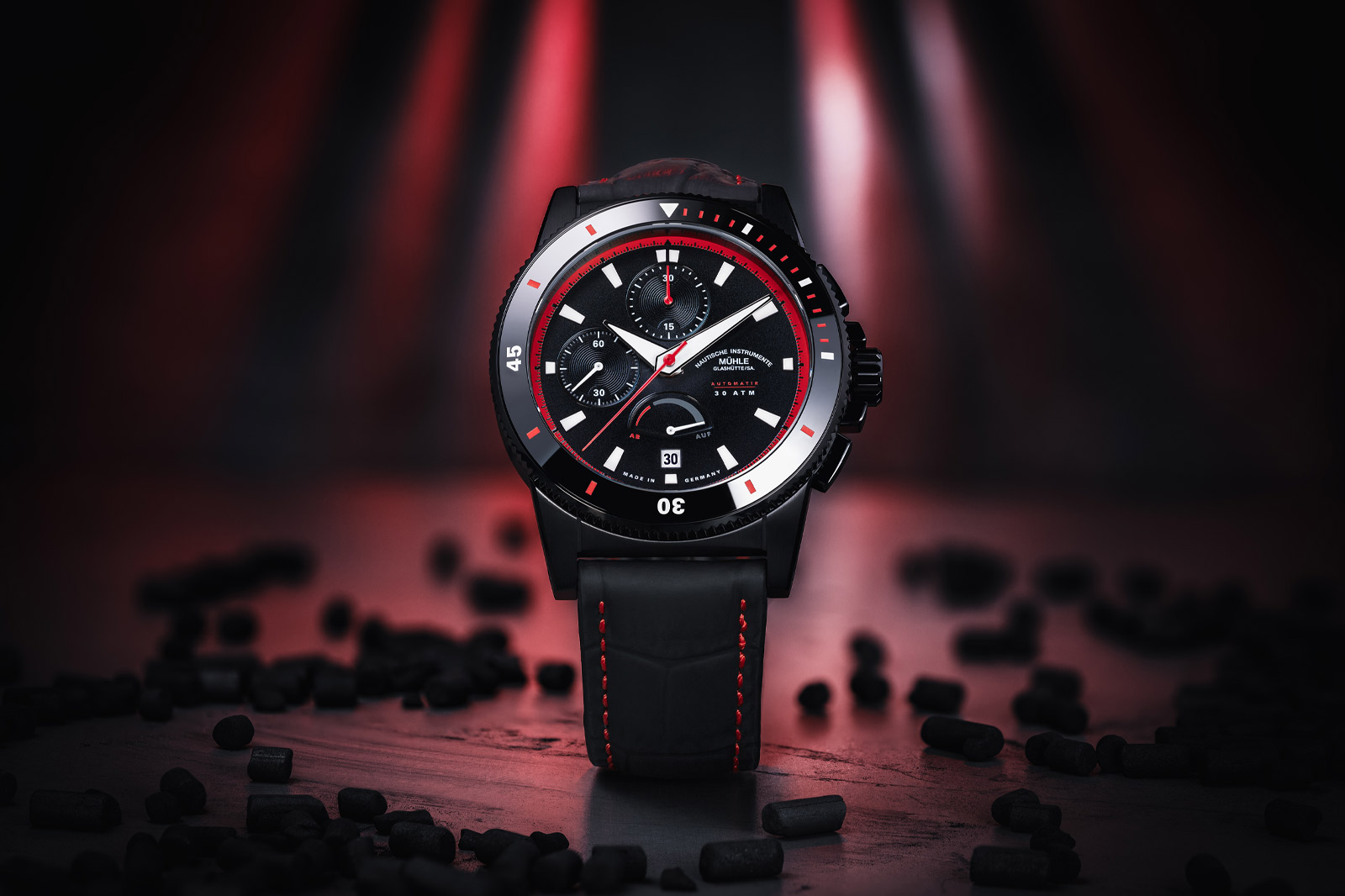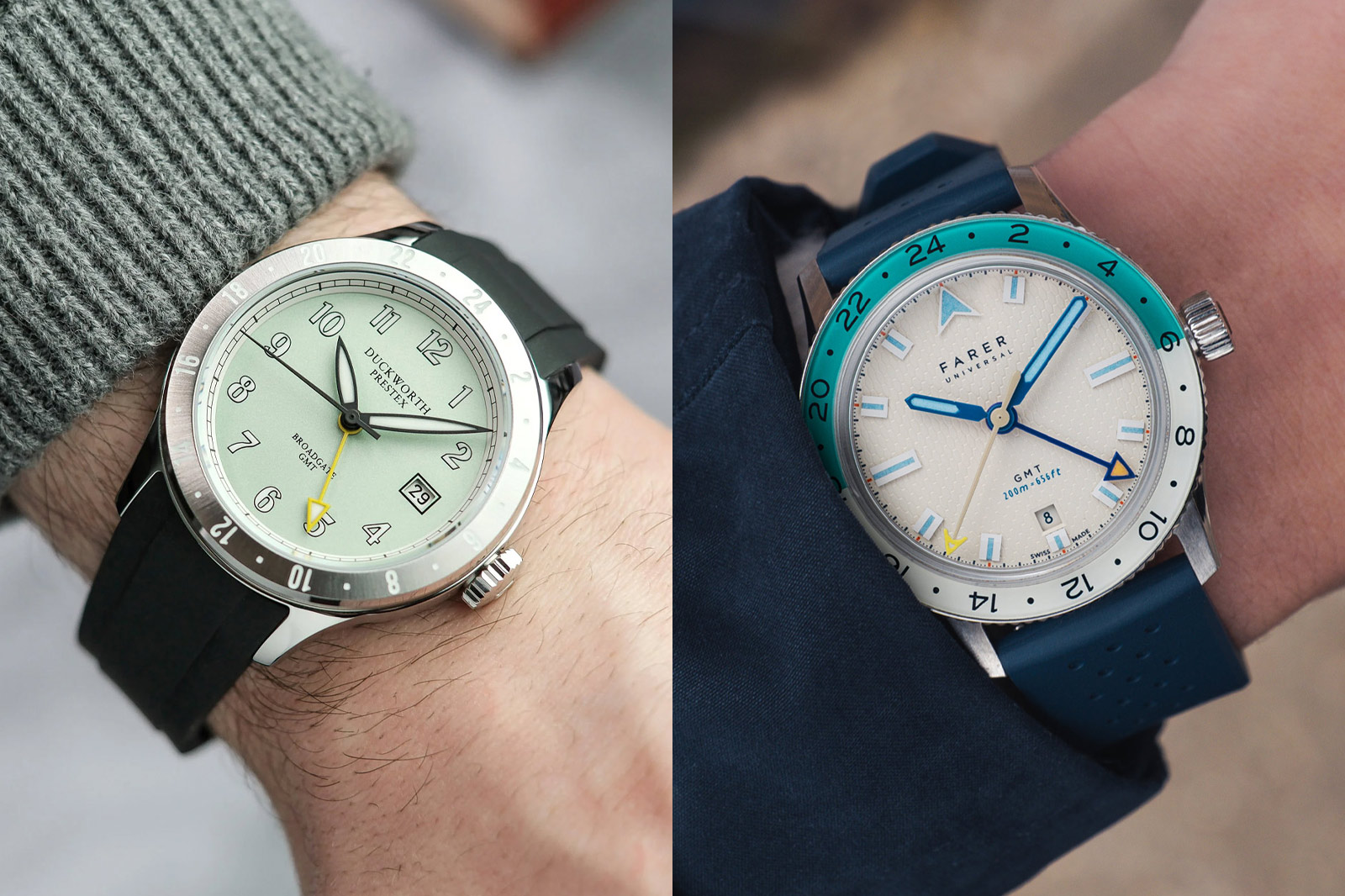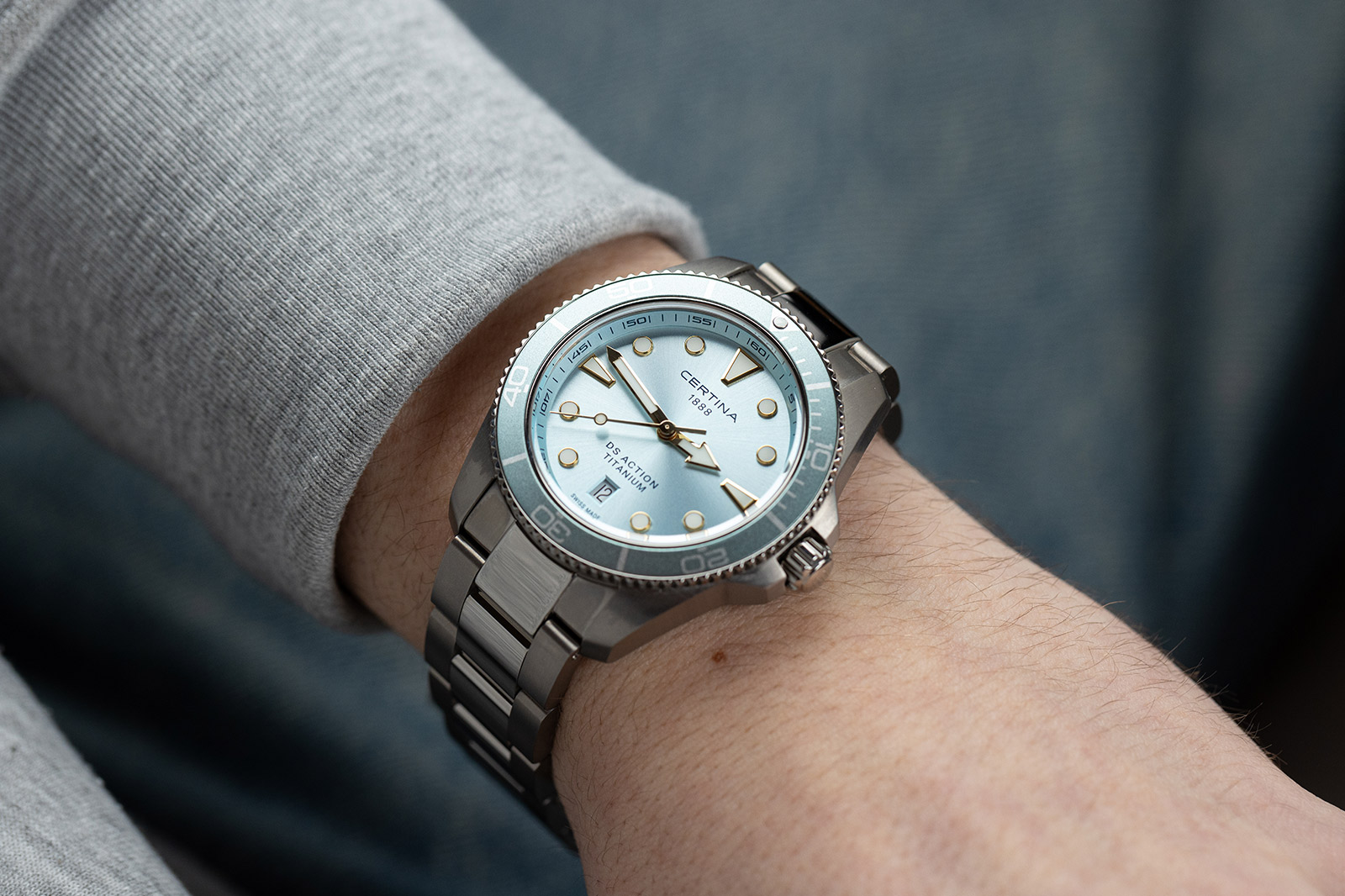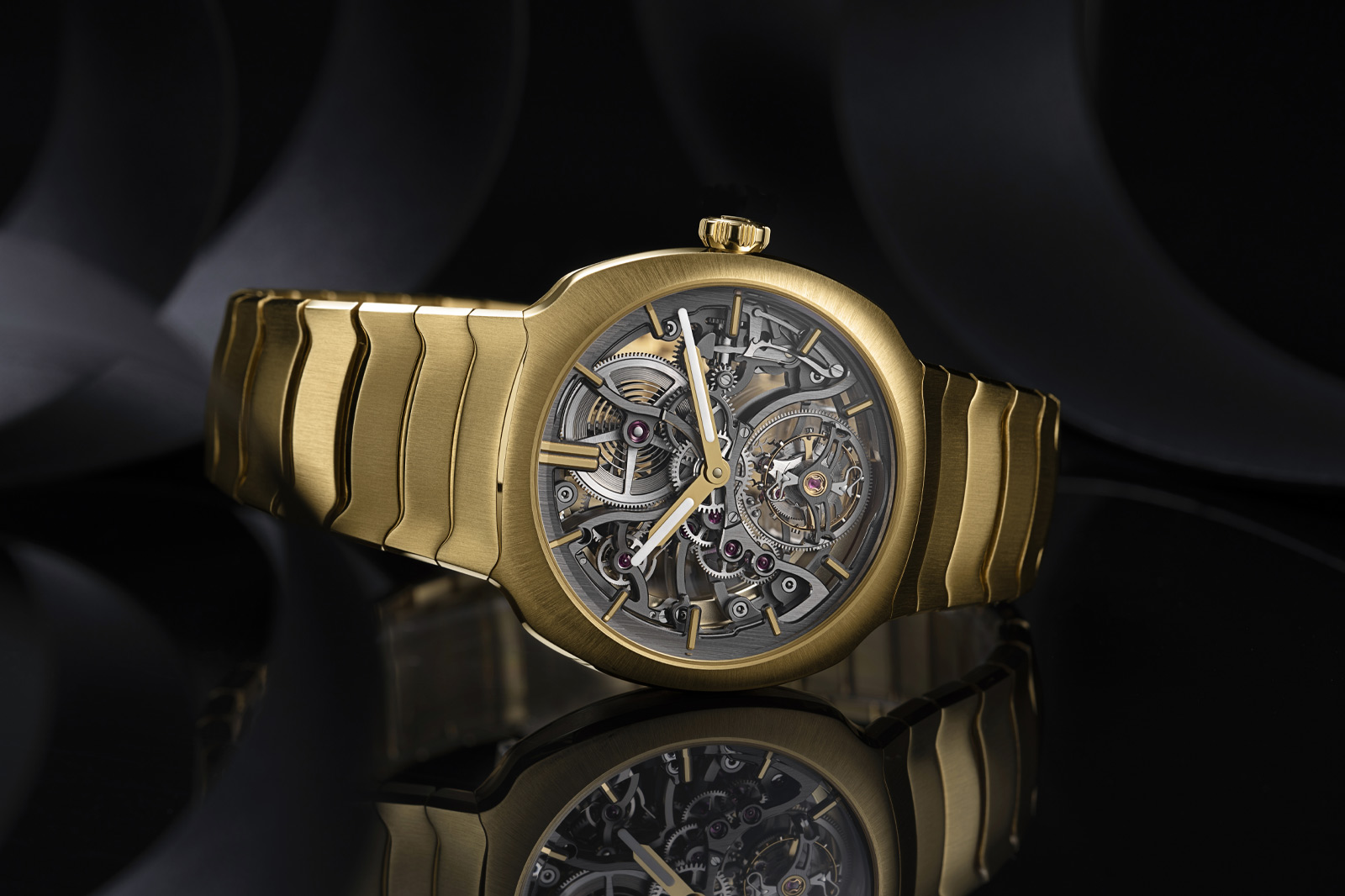Today the British watch industry is a vibrant melting pot of aesthetics and philosophies, from accessible twists on classic designs to timepieces drenched in playful colours and tongue-in-cheek fun. So, if you’re looking for a reason to get genuinely excited about buying local, look no further. Here are the best British watch releases of 2025 – so far.

Riley Watch Co. Howard Hughes Chronograph 02
While most of us can be a little too snobbish when it comes to our watch movements, there’s a lot to be said for a fun, accessible bit of quartz. While the Howard Hughes Chronograph looks like a racing watch with its peripheral tachymeter, think air speed more than horsepower – if the name didn’t already give that away. On paper, a khaki-coloured pilots’ watch should be very military, but the vintage style, retro pushers and slim case make for a very different sort of watch, one well worth a punt at this price point.
Case/dial: 40mm diameter x 11mm thickness, stainless steel case, khaki dial
Water resistance: 50m (5 bar)
Movement: Seiko calibre VK64, Mecha-Quartz
Strap: Leather with dial matching stitching
Price: £199
Shop Now

Pompeak Mallory
Creating a dressy-yet-practical watch is a deceptively hard line to toe, but the shiny new Mallory from Pompeak does so with confidence. That confidence largely comes from the extraordinarily bright orange dial, but there’s a lot more going on than just colour. Ostensibly inspired by explorer George Mallory, the watch has plenty of classical touches, with Roman numerals at the cardinal points and a knurled ring around the dial. Set on a superb mesh bracelet, the Mallory is a gloriously anachronistic mix of eras of British watchmaking. Launching on 5th March.
Case/dial: 40mm diameter, stainless steel case, orange dial
Water resistance: 100m (10 bar)
Movement: Sellita calibre SW260-1, automatic, 28,800 vph (4 Hz) frequency, 41h power reserve
Strap: Stainless steel bracelet
Price: £584
Shop Now

Detrash Cali
Bringing a bit of West Coast sunshine to our overcast British shores, the latest from Detrash pairs a crisp, white California dial – for the first time with no date, which is much appreciated – with a monochromatic steel rotating bezel. With a few light blue highlights, it’s a fantastic summer watch, whether you’re on the Pacific Coast Highway or stuck in London traffic. It’s also one for the environmentally conscious, made as it is from 80% recycled steel, with a recycled ocean plastic strap.
Case/dial: 41mm diameter x 12.9mm thickness, 80% recycled stainless steel, white dial
Water resistance: 200m (20 bar)
Movement: Seiko calibre NH35, automatic, 21,600 vph (3 Hz) frequency, 24 jewels, 41h power reserve
Strap: #tide recycled ocean plastic
Price: £375
Shop Now

Omologato Indianapolis
No brand lives and breathes motorsport quite like Omologato and, while their future is fully-automatic, for now they’re still bringing out some cool, accessible mecha-quartz numbers. This racy, aesthetically technical mix of red, black and openworking is an ode to IndyCar, which Omologato have participated in since 2017 with Chip Ganassi Racing and, what it lacks in mechanical prestige, it makes up for in high-octane design. Set on a black silicon strap with red racing lines, it wears its inspirations on its sleeve. And for not a huge amount of money, yours too.
Case/dial: 43mm diameter, stainless steel with IP coating, black dial
Water resistance: 100m (10 bar)
Movement: Seiko calibre VK64, Mecha-Quartz
Strap: Black silicon
Price: £395, limited to 100 pieces
Shop Now

Clemence Munro Ridgeline Dusk
If like a lot of collectors, you missed out on Clemence’s previous multi-coloured field watch, you’re in luck. The Ridgeline is back, in a slightly subtler, firmly darker iteration in the Ridgeline Dusk. It still has the same three-sectioned dial, but with the grey and teal swapped around, and everything given a more pastel feel. It’s cooler, calmer yet just as distinctive as the previous run of Munro watches and has all the same field watch credentials, meaning a svelte 37.5mm case and workhorse Miyota movement. Coming soon on 8th March to coincide with British Watchmaker’s Day. Get it while you can.
Case/dial: 37.5mm diameter, stainless steel case, multi coloured dial
Water resistance: 150m (15 bar)
Movement: Miyota calibre 9039, manual, 28,800 vph (4 Hz) frequency, 42h power reserve
Strap: Stainless steel bracelet
Price: £499
Shop Now

Beaucroft Element Ocean
We already touched on Beaucroft’s dressy new Element collection in the last issue, but while it’s easy to get carried away with the bright, eye-catching colours, there’s something innately wearable about a versatile ocean blue. Not that it’s the usual, flat colour you find in most dive watches; here the dial construction and rich gradient of the teal add depth to proceedings, working with the otherwise field watch-adjacent construction and 200m water resistance to create a solid go-anywhere, go-anything watch. Hell, it’ll even look killer at the pub. Check out this issue’s photo shoot if you don’t believe me.
Case/dial: 39.5mm diameter x 11.6mm thickness, stainless steel case, gradient sunray blue dial
Water resistance: 200m (20 bar)
Movement: Miyota calibre 9039, automatic, 28,800 vph (4 Hz) frequency, 24 jewels, 42h power reserve
Strap: Stainless steel bracelet
Price: £649
Shop Now

Duckworth Prestex Broadgate GMT
Mint green is fast becoming one of the zeitgeisty colours of the moment and if there’s one thing Duckworth Prestex know, it’s colour. If there’s another, it’s value, so it’s not too big a surprise to see their new Broadgate GMT has both in spades. There are other colours of course – including a popping gradient orange, same as the superb Verimatic – but the pale mint hue paired with the steel 24-hour bezel offers a more subtle embracing of colour, particularly with the flash of yellow on the GMT hand. Despite being a travel watch, it’s also supremely practical with 200m water resistance, making it versatile in both form and function.
Case/dial: 40mm diameter x 12.5mm thickness, stainless steel case, mint green dial
Water resistance: 200m (20 bar)
Movement: Miyota calibre 9075, manual, 28,800 vph (4 Hz) frequency, 42h power reserve
Strap: Stainless steel bracelet or black rubber
Price: £795
Shop Now

Elliot Brown Holton Auto GMT Ebinox
As their mission timer Beachmaster shows, Elliot Brown know what makes a proper, military-style watch. But most of us don’t necessarily need all those spec ops bells and whistles and for us there’s the Holton Auto GMT Ebinox. The watch has a hardened case for taking the bumps and knocks of everyday life and the GMT function – using an inspired broad arrow hand – makes it a great daily wearing traveller’s watch. Throw in the innately handsome, high contrast look of a vintage military watch complete with a grippy knurled bezel and you have a solid timepiece with an even more solid price tag.
Case/dial: 43mm diameter, stainless steel case, matte black dial
Water resistance: 200m (20 bar)
Movement: Seiko calibre NH34, automatic, 21,600 vph (3 Hz) frequency, 41h power reserve
Strap: NATO fabric
Price: £895
Shop Now

Christopher Ward Dune Aeolian Bronze
If this particular release looks familiar, you’re likely thinking back to around this time last year when we launched the Christopher Ward x Oracle Time Dune Shoreline, our debut collaboration. Well, we evidently hit the nail on the head with the somewhat literal sand dune dial as now Christopher Ward have brought the 3D dial into their core collection with the new Dune Aeolian. The bronze version with its Maram green dial is particularly lovely (and offers a COSC movement). While it doesn’t have quite the same monochromatic cool as the Shoreline – and doesn’t exactly get points for originality – it’s a solid facelift to Christopher Ward’s field watch.
Case/dial: 38mm diameter x 11.7mm thickness, bronze case, green dial
Water resistance: 50m (5 bar)
Movement: Sellita calibre SW200-1, automatic, COSC-certified, 28,800 vph (4 Hz) frequency, 38h power reserve
Strap: Camel canvas webbing
Price: £975
Shop Now

Farer GMT Bezel
After a two-year hiatus, Farer’s triple-time zone GMT bezel collection is back and better than ever, especially when it comes to the Charlton Green variant. A mix of punchy Persian green and cream, light blue indexes and hands bordered with more cream and dark blue respectively, there’s a lot going on. Even the second and GMT hands are tipped in different colours. But what really sets it apart is the subtle honeycomb texture to the dial. It’s one of the most aesthetically confident designs Farer has ever produced – which given their propensity for out-there colourways, is saying something.
Case/dial: 38mm diameter x 12.5mm thickness, stainless steel case, honeycomb pattern cream dial
Water resistance: 200m (20 bar)
Movement: Sellita calibre SW210, manual, 28,800 vph (4 Hz) frequency, 40h power reserve
Strap: NATO fabric
Price: £1,325
Shop Now

Aera M-1 Blackbird
There are more than a few riffs on the Dirty Dozen out there; the legendary MoD commission is still reverberating through military watch design today. But Aera’s more minimal, black-out take, fittingly dubbed the Blackbird, brings the heritage look into the modern era. With blue iron sights and a blue-tipped small seconds hand, it’s thankfully not too faithful to the pure high-contrast look and the result is an unusually distinctive twist on a horological archetype that usually doesn’t leave much room for manoeuvre.
Case/dial: 39mm diameter, black PVD stainless steel, black dial
Water resistance: 100m (10 bar)
Movement: Sellita calibre SW216-1, manual winding, 28,800 vph (4 Hz) frequency, 42h power reserve
Strap: NATO fabric
Price: £1,600
Shop Now

Escudo Ocean Seacrest Deep Azul
The Portuguese heritage of British brand Escudo’s Ocean Seacrest continues to run its way through a plethora of handsome colourways, now taking on the wearably versatile mix of a black dial with a blue bezel. All the highlights are still there, like the compass points at 12, three, six and nine, and the Portuguese flag 12 o’clock marker and rounded number medallions on the rotating diving bezel. The result is a classic diver with a good deal more personality than any Submariner clone. There’s a lot to love in a straightforward, practical diver like this.
Case/dial: 39mm diameter x 12.8mm thickness, brushed stainless steel, black dial
Water resistance: 50m (5 bar)
Movement: Escudo calibre 1488 (based on SW200-1), manual, 28,800 vph (4 Hz) frequency, 38h power reserve
Strap: Stainless steel bracelet
Price: £1,645, limited to 300 pieces
Shop Now

Vertex M36 Bronze
The smaller sized M36 version of Vertex’s heritage Dirty Dozen watch was long overdue when it landed last year, but now the British brand’s riffing on that diminutive archival design. Turns out, it’s frustratingly good-looking in bronze. Paired with a subtle black dial, beige numerals and looking particularly cool on a woven fabric strap, this isn’t exactly what the Ministry of Defence asked for – but surely that’s just because they didn’t realise it would look this good? Otherwise, it’s the historical field watch we know and love.
Case/dial: 36mm diameter x 11mm thickness, bronze case, green dial
Water resistance: 100m (10 bar)
Movement: Sellita calibre SW260-1 Elaboré, automatic, 28,800 vph (4 Hz) frequency, 38h power reserve
Strap: Fabric
Price: £2,295
Shop Now

Isotope Mercury Marquetry
Metiers d’art are no longer the sole purview of the prestige Swiss brands. Sure, enamel’s been a British stalwart for a while now but marquetry, the fine art of miniature mosaic? That’s another matter entirely. Enter Isotope and their cushion-cased Mercury. Rather than wooden veneer, the dial here is made using straw by Parisian artisan Bernardo d’Orey. And while the planetarium-esque dial is stunning, each piece is completely bespoke. So, consider this stunner a proof of concept; the end result can be whatever you can think of.
Case/dial: 38mm diameter x 10mm thickness, stainless steel case, Straw Marquetry dial
Water resistance: 100m (10 bar)
Movement: Isotope calibre I-7 (based on ETA Peseux 7001), manual winding, 21,600 vph (3 Hz) frequency, 42h power reserve
Strap: Grey or beige suede leather
Price: £2,400
Shop Now

Fears Brunswick 38 Orchid
This won’t be the only Brunswick you’ll see in these pages (especially if you paused to admire the cover), but this gorgeous pink edition, the twin to the baby blue Aurora, has a very different personality. Don’t fall into the trap of assuming the orchid-coloured mother-of-pearl makes it a women’s watch; its 38mm of cushion case hits the same classical, 1930s-flavoured notes as the classic Brunswick, just with the kind of flair that you’ll simply need to break out once spring has properly sprung.
Case/dial: 38mm diameter, stainless steel case, pink-tinted mother of pearl dial
Water resistance: 100m (10 bar)
Movement: La Joux-Perret calibre D100, manual winding, 21,600 vph (3 Hz) frequency, 50h power reserve
Strap: Dark grey
Price: £3,650
Shop Now

Brooklands Golden Miller Chronograph
While Brooklands’ raison d’etre is focused on motor racing, their latest timer is devoted to a very different breed of horsepower. The name comes from the five-time winner of the Cheltenham Gold Cup, Golden Miller, and a piece of that legacy – in the form of a buckle made from a winning horseshoe – is in every watch. It’s otherwise a clean, handsome chronograph with a vertical bi-compax display in a charming mix of cream and white. Oh, and for die-hard racing fans, each of the 100 watches comes with an invitation from the Jockey Club to the Cheltenham Gold Cup 2026. Now, that’s worth waiting for.
Case/dial: 38mm diameter, brushed stainless steel, black dial
Water resistance: 50m (5 bar)
Movement: Sellita calibre SW210, manual, 28,800 vph (4 Hz) frequency, 40h power reserve
Strap: NATO fabric
Price: £6,800
Shop Now

Garrick S7
Lying somewhere between your accessible fun timepieces and the artisanal maestros like Roger Smith, sits Garrick – a level of horology their S7 admirably demonstrates. A tour de force of traditional watchmaking techniques, pick your finishes, colour and go wild. Can’t decide? Throw a few in the mix; the multi-layered dial has plenty of options. Powered by a vintage Unitas movement (manual-wind, of course), Garrick offers an insane amount of watch for the money. There’s a good reason their order book is full until 2026!
Case/dial: 38mm diameter x 9mm thickness, stainless steel case, engine turned dial
Water resistance: 100m (10 bar)
Movement: Calibre BF04 (modified 6425), manual winding, 21,600 vph (3 Hz) frequency
Strap: Alligator, calf leather, buffalo or ostrich
Price: £7,800 (solid caseback), £10,200 (exhibition caseback)
Shop Now

Justin Richardson 840 Octavo Skeleton
Personally, I always frame watches as a piece of jewellery every man can wear and, while that’s more to explain why I never set them, Justin Richardson have taken the idea to heart. The striking, platinum-cased 840 Octavo is a hand-made beauty leveraging Justin Richardson’s goldsmithing heritage for a uniquely faceted look. This version strips away most of the dial to showcase the movement underneath. What remains is split between a minute track on the top half, classic numerals underneath – although given that each Octavo is made to order, everything is customisable. Have an idea in mind? Justin Richardson can make it happen.
Case/dial: 39mm diameter, platinum or gold, skeletonised dial
Water resistance: 50m (5 bar)
Movement: Sellita calibre SW300, automatic, 28,800 vph (4 Hz) frequency, 42h power reserve
Strap: Alligator or buffalo leather
Price: £18,600
Shop Now















